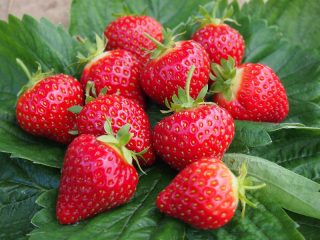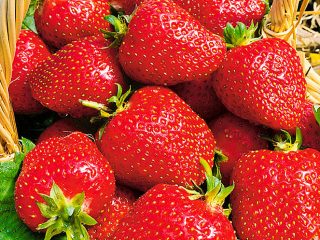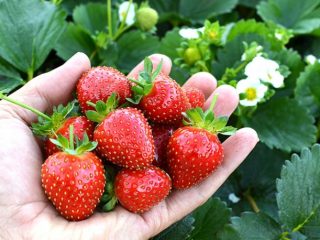Content
Tristan strawberry is a Dutch variety that is not yet widespread in Russia. Basically, summer residents grow it in the Central Region - from the North-West to the South. Differs in moderate winter hardiness and long-term fruiting, which lasts until the first frost. The berries are moderately large and have a pronounced sweet taste.
Breeding history
Strawberry Tristan (Tristan) is a hybrid of the first generation (F1), obtained by breeders of the Dutch company ABZ Seeds. The company specializes in breeding hybrids that are resistant to drought, frost, pests and other adverse factors.
The hybrid has spread across Europe, the United States and partly across Russia. It has not yet been entered into the register of breeding achievements. However, many summer residents are already growing this crop on their plots. They appreciate her for a stable harvest, which the bushes give until the end of summer.
Description of the Tristan strawberry variety and characteristics
Strawberry Tristan - ampelous culture. It is a type of large-fruited strawberry that gives a high yield. Berries appear throughout the season, which favorably distinguishes the culture from other varieties.
The bushes are compact and low - they reach 30 cm in diameter and 25 cm in height. They practically do not give a mustache, they can be grown both in open beds and in pots.
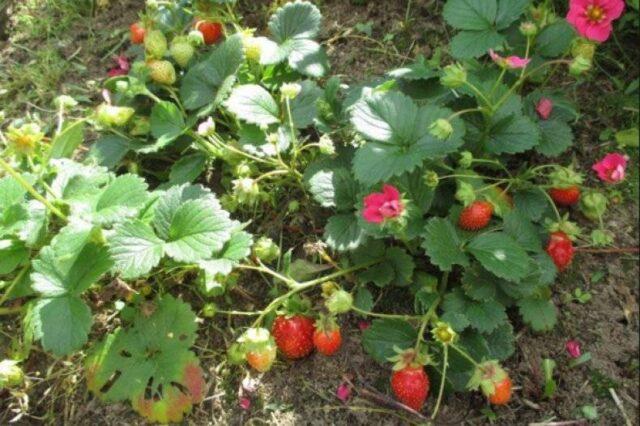
Tristan strawberry is characterized by early flowering
Inflorescences open in the first half of May. A lot of them appear, which ensures a high yield.
Characteristics of fruits, taste
Tristan strawberries are medium and large, weighing 25–30 g. The shape is symmetrical, regular, conical or biconical, elongated. The color is dark red, the surface is glossy, shines in the sun. The taste is noticeably sweet, dessert, with a pleasant aroma. The purpose of Tristan strawberries is universal. They are consumed fresh, and also used for jam, jam, fruit drink and other preparations.

Tristan strawberries can be grown in pots
Ripening terms, yield and keeping quality
The first berries ripen in mid-June. They appear throughout the summer and even in September before the first (moderate) frosts. That is why Tristan strawberries belong to remontant varieties with long and extended fruiting (the period can last four months).
The yield is high: from 700 g to 1 kg from each bush. At first glance, this is a small figure. But if you consider that the bushes are not spreading, then from a square meter you can get up to 5 kg of good quality berries.
Such high rates are achieved due to long-term fruiting, as well as due to the fact that berries are regularly formed both on mother bushes and on daughter outlets. Moreover, for this they do not even need to be shortened. Although rosettes appear in small numbers, they still contribute to the overall yield.
The fruits have a fairly dense pulp and strong skin. Therefore, they are distinguished by good keeping quality. Fresh Tristan strawberries can be kept in the refrigerator for several days. Transportability is also good, which is why strawberries are grown commercially for sale.
Growing regions, frost resistance
Tristan strawberries are distinguished by moderate winter hardiness, and in the description of the variety from the originator it is stated that it can be grown in zone 5, which corresponds to temperatures up to -29 degrees. Thus, Tristan strawberries can be cultivated only in the regions of Central Russia:
- Northwest;
- Moscow region and middle lane;
- Volga region;
- Black earth;
- southern territories.
It is difficult to grow a variety in the Urals, Siberia and the Far East. But since the bushes are not spreading, they can be cultivated in pots or in boxes in heated rooms.
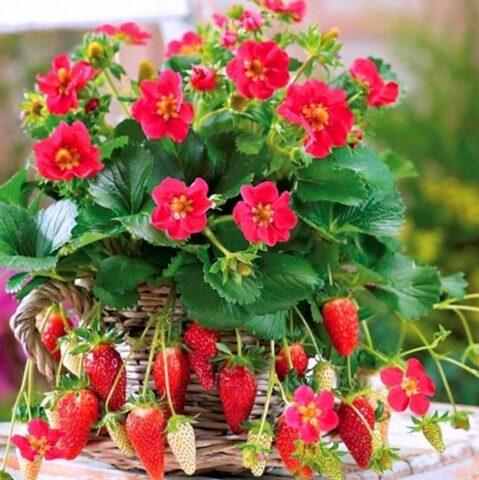
Tristan strawberries can be grown in most regions of Central Russia
Disease and pest resistance
The variety has a fairly good immunity. However, damage to common diseases is not excluded:
- anthracnose;
- different forms of rot;
- spotting;
- late blight on the roots;
- rhizoctoniasis.
The following pests are dangerous for Tristan strawberries:
- weevil;
- aphid;
- garden mite and others.
Therefore, it is necessary to carry out mandatory treatments with fungicides (before flowering):
- Bordeaux liquid;
- Horus;
- "Maksim";
- Signum and others.
Insects can be dealt with using folk methods. For spraying use: infusion of tobacco dust, onion husks, garlic cloves, decoction of potato tops, marigold flowers, mustard powder and others. In extreme cases, insecticides are used:
- Aktara;
- "Confidor";
- Fitoferm;
- Inta-Vir and others.
After using chemicals, you can start harvesting in 3-5 days.
Advantages and disadvantages of the variety
Tristan strawberries are appreciated by summer residents for their good yield. This is a great option for lovers of fresh strawberries throughout the summer season and even early fall. The variety has other tangible benefits as well.
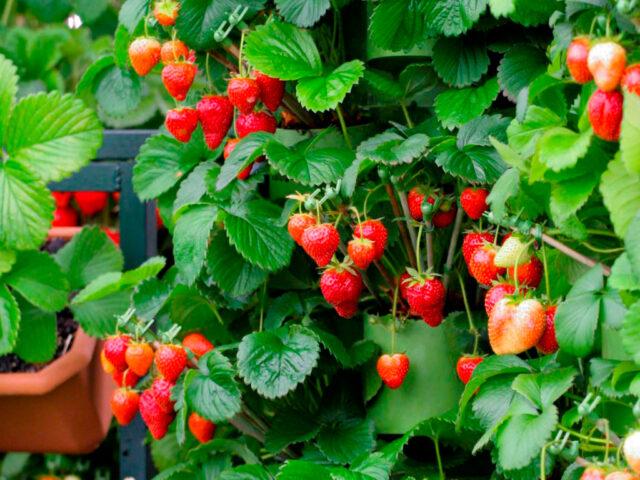
Tristan strawberries produce a harvest for four months
Pros:
- high, stable yield;
- long-term fruiting until the first frost;
- pleasant taste and aroma;
- attractive presentation;
- undemanding care;
- good keeping quality and transportability;
- resistance to some diseases.
Minuses:
- high cost of seed;
- plants cannot be diluted with a mustache;
- culture does not take root in all regions.
Reproduction methods
Since Tristan practically does not give a mustache, strawberries have to be propagated by growing seedlings from seeds. They purchase them from suppliers - it is impractical to collect them on their own. Tristan is a hybrid and therefore does not produce a prolific generation.
Seeds are sown in late February or early March. For this, disposable cups are used, since strawberries of this variety do not like transplants. The soil can be purchased at the store or made on the basis of sod land, black peat, humus and sand (2: 1: 1: 1). Previously, it is spilled with a solution of potassium permanganate or put in the freezer for several days.
The seeds are spread with tweezers on the surface and lightly sprinkled with earth. Then it is moistened with a spray bottle, covered with a lid and placed in a warm place (24-25 degrees). Periodically ventilated and watered. When shoots with three leaves appear, the film is removed. All this time, Tristan strawberry seedlings need to be supplemented with phytolamps. The total duration of daylight hours should be 14-15 hours.
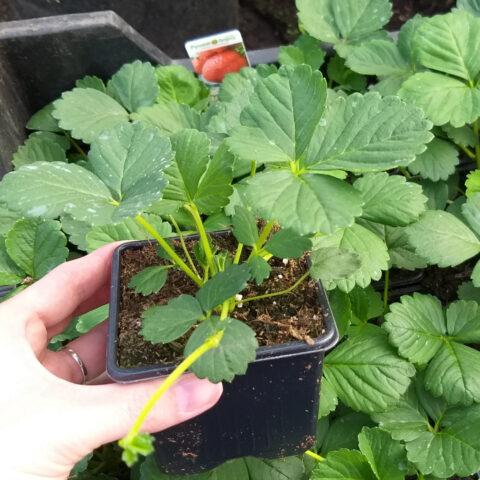
Tristan strawberry seedlings are best grown in separate containers
Planting and leaving
Planting crops in open ground is planned for mid-May, when there will be no return frosts. The scheme is standard - you can leave a distance of 15–20 cm between the bushes, placing them in rows in a checkerboard pattern. When choosing a place, you should pay attention to good illumination (although a weak shadow is also allowed), protection from winds and low moisture (lowlands should be excluded).
Tristan strawberries are unpretentious in care. The cultivation technique is standard. It should be watered regularly, giving warm, settled water every week, in a drought - twice as often. After watering, the soil must be loosened. Weeding is carried out periodically. Bushes give little mustache, they are removed as needed in May and June.
Tristan strawberries are grown on fertile, light soils with a slightly acidic reaction. Even on rich soils, the bushes need regular feeding - up to 4-5 times per season:
- In early April, mullein (1:10) or chicken droppings (1:15) are used, you can also give urea at the rate of 20 g per 10 liters per 1 m2 area.
- After the appearance of peduncles (mid-May), potassium nitrate is needed (10 g per 10 l per 1 m2).
- At the beginning of July, add mullein, superphosphate (50 g per 10 l per 1 m2) and wood ash (100 g per 10 l per 1 m2).
- In early September, wood ash can be added (200 g per 10 l per 1 m2).
Preparing for winter
To grow fruitful Tristan strawberries, both in the photo and in the description of the variety, gardeners in their reviews recommend paying special attention to preparing for winter. In the southern regions, it is enough to simply remove the leaves and mulch the plantings with sawdust, a low layer of straw or dry foliage.
In all other areas, the bushes need a compulsory shelter. The best way is to install a frame made of metal or wooden pegs and cover with agrofibre. Previously, a layer of mulch is laid on the plantings, the height of which depends on the climatic conditions of the region.
Conclusion
Strawberry Tristan is a little-known variety in Russia that you can include in your collection. The bushes do not require any special care. Even with standard agricultural techniques, up to 1 kg of sweet, fairly large and beautiful berries can be harvested from each plant.
Reviews of gardeners about Tristan strawberries
